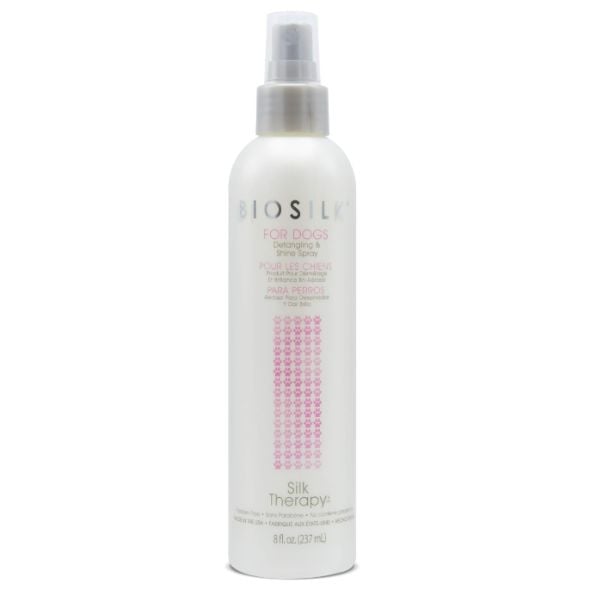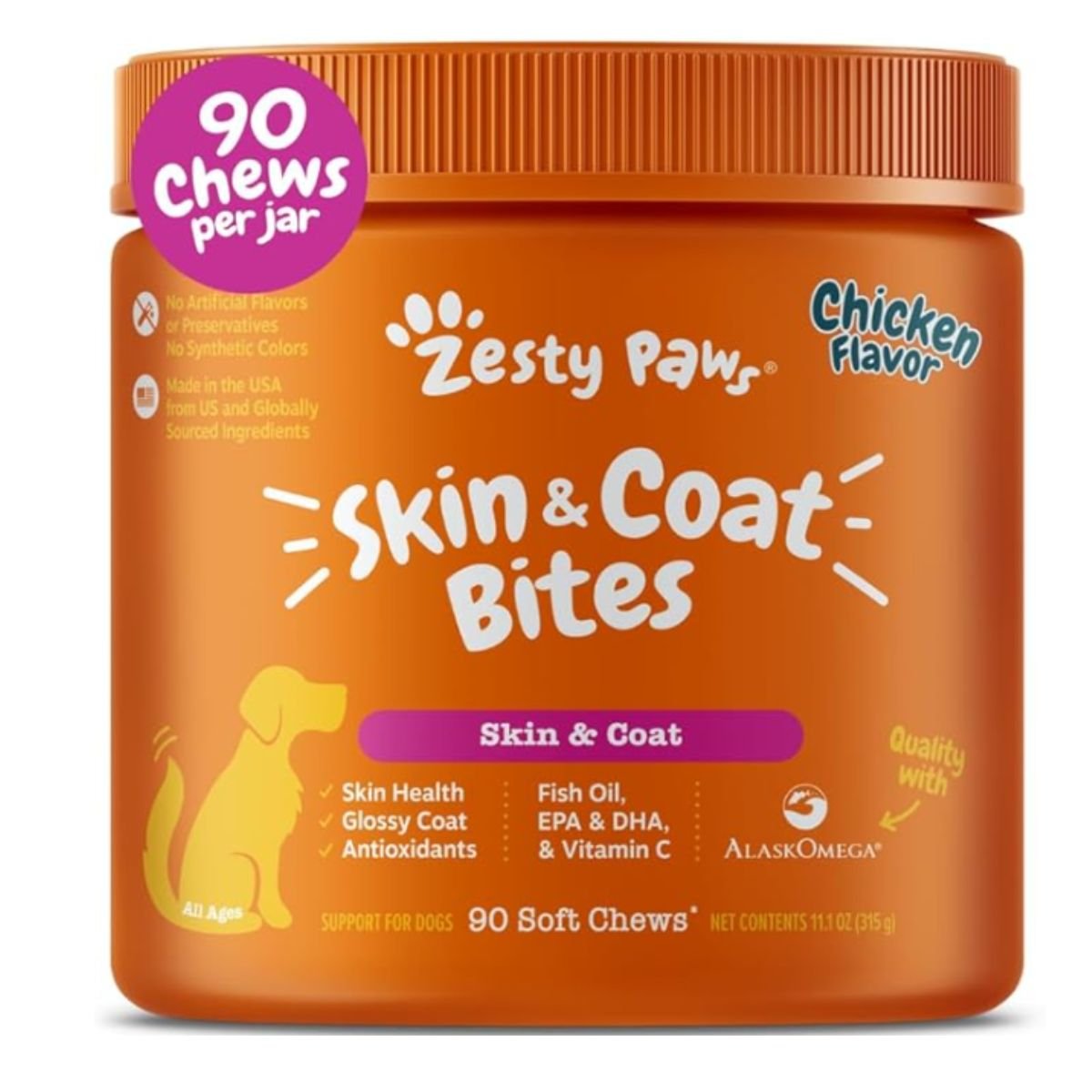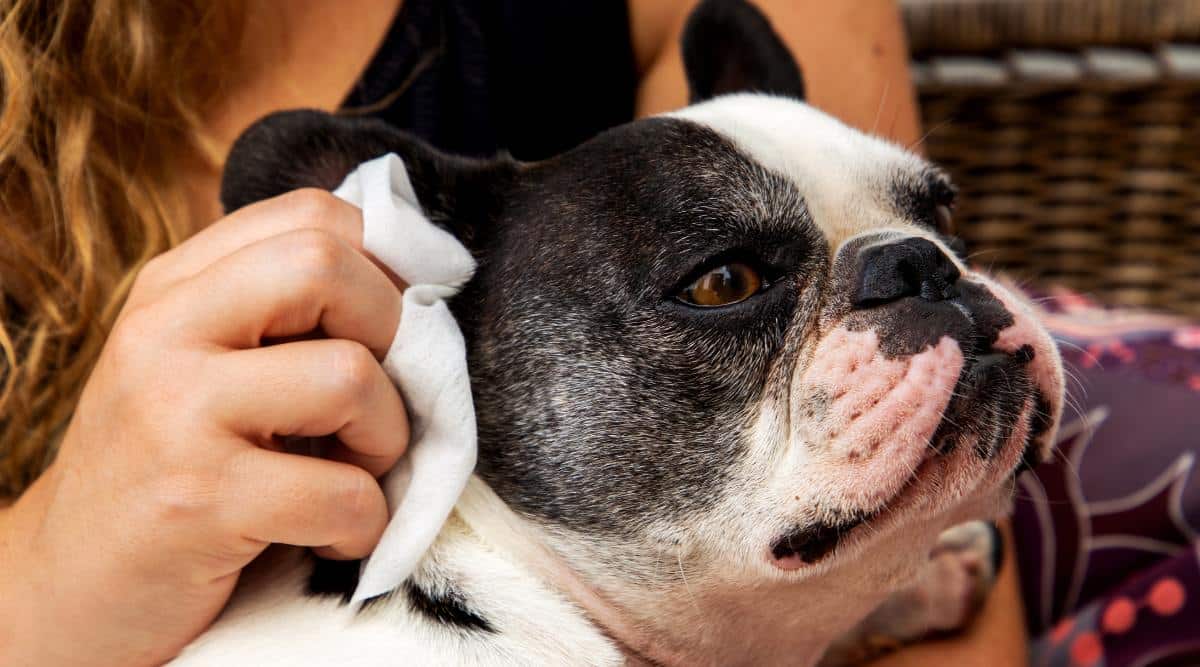Think Shih Tzus Don’t Shed? Here’s the Fluffy Truth
When you purchase through links on our site, we may earn a commission. Here’s how it works.
You’ve probably heard it a dozen times – “Shih Tzus don’t shed.” But then, why does your couch look like a snow globe that has exploded?
Table of Contents
The truth is, Shih Tzus do shed, just differently than most dogs. The good news? There are easy ways to manage it before your house turns into a fur factory.
| Best Brush | Best Comb | Best Mat Removal Tool | Best Air Purifier | Best Vacuum |
|---|---|---|---|---|
| Groomage Pin Brush | We Love Doodles | Safari | Winix | Shark |
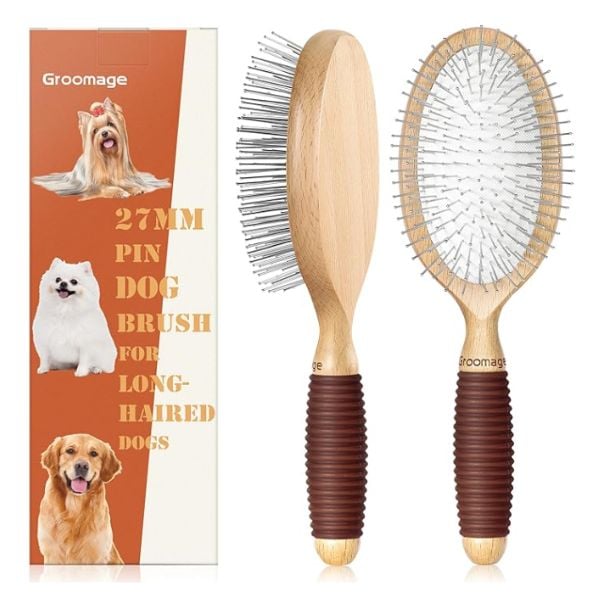 | 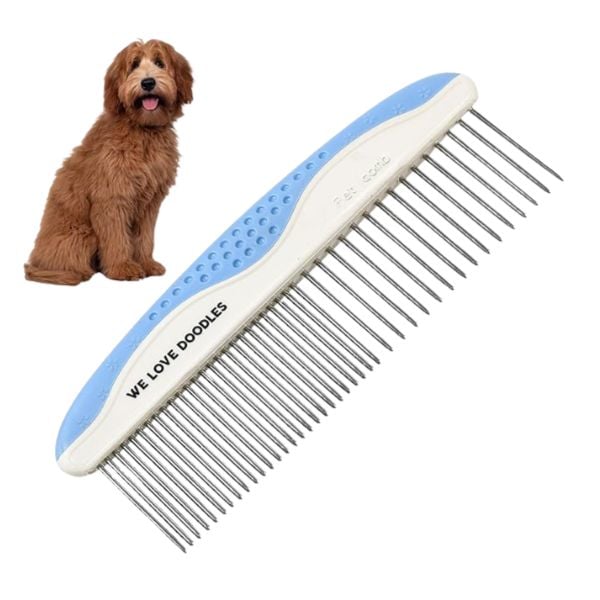 | 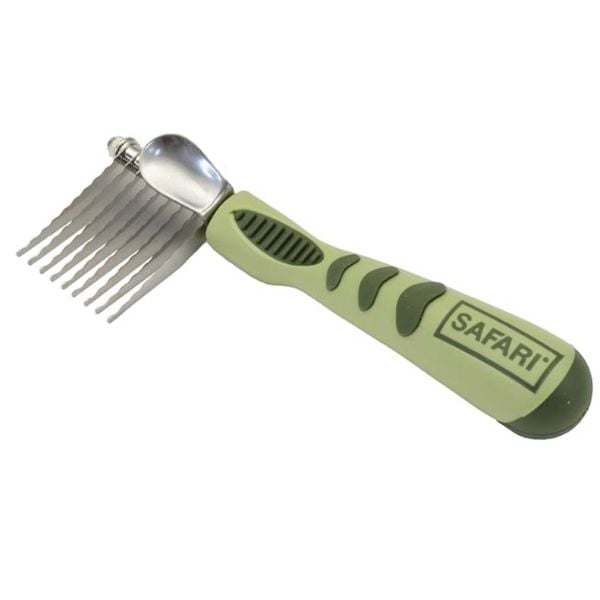 |  | 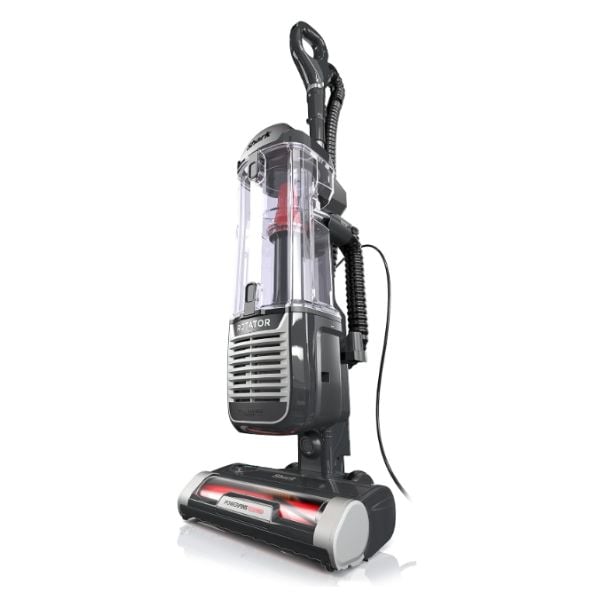 |
| Visit Amazon | Visit Amazon | Visit Amazon | Visit Amazon | Visit Amazon |
Do Shih Tzus Shed or Moult? Here’s the Fluffy Truth
Let’s cut to it: yes, Shih Tzus shed, but not in the way most dog owners expect.
Shih Tzus have hair, not fur, and their shedding is more like a slow, sneaky moult than a fluff explosion. Unlike short-haired dogs that drop hair all over the floor, Shih Tzus have a double coat that traps loose hairs inside until you brush them out.
That’s why some people think they don’t shed at all, but your vacuum says otherwise.
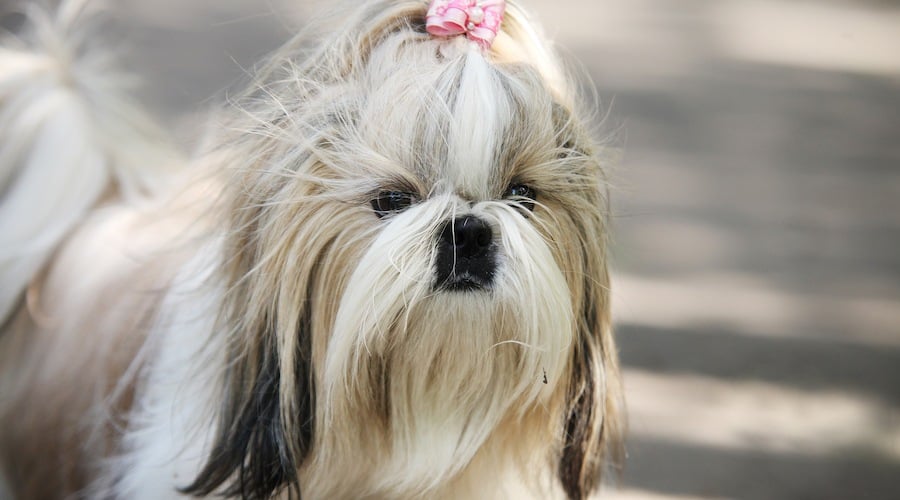
Technically speaking, shedding and moulting are part of the same hair cycle. You may not see clumps of hair falling off, but during seasonal coat changes (spring and fall), their undercoat releases a ton of hair; it just stays caught in the longer outer layer.
Fun fact: Shih Tzus are sometimes called chrysanthemum dogs because of the way their hair grows on their faces.
Quick Takeaway
- Do Shih Tzus shed? Yes, just more slowly and secretly than most breeds.
- You’ll notice it most during spring and fall (moulting seasons).
- If you’re not brushing regularly, the shed hair builds up fast in their coat and ends up everywhere later.
Double Trouble or Low-Shed Love?
Shih Tzus don’t shed the same way as other dogs, and their double coat is the reason why. Think of it like this:
- The undercoat is where the fluff lives
- The outer coat is where it gets stuck
- Your brush is the only way out
Their long, slow-growing hair (not fur) doesn’t fall out easily, but that doesn’t mean they’re not shedding. It’s just waiting to be released… by you. If you skip grooming? That shed hair mats, tangles, and eventually spreads across your home anyway.
Myth vs Fact: “Hypoallergenic” Doesn’t Mean Fur-Free
You’ve probably seen it on breed lists: “Shih Tzus are hypoallergenic.” Sounds magical, right? A royal-looking pup with no shedding and allergy-safe cuddles? Not quite.
Here’s the truth: No dog is 100% hypoallergenic.
What people react to isn’t just hair, it’s dander, saliva, and urine proteins. Shih Tzus do shed (as you now know), and they still produce dander, just like every other breed.
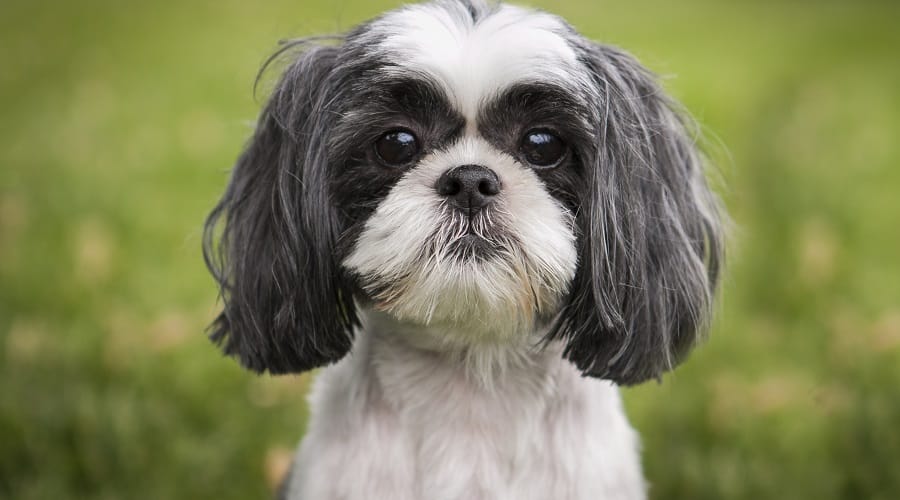
So, why are they labeled “hypoallergenic”? Because Shih Tzus shed less visibly than many dogs, and their long hair traps more allergens close to their body, meaning fewer particles float around your house if you keep up with grooming.
If someone in your home has pet allergies, you’ll want to test exposure first, and invest in some allergen-fighting tools (I’ll cover those soon).
Grooming Tips That Reduce Shedding
Grooming isn’t just about keeping your Shih Tzu looking sharp. It’s your first line of defense against hair tumbleweeds.
But here’s the catch: some grooming habits actually make shedding worse. Here’s how to reduce it the right way:
DO: Brush Daily
- Use a slicker brush for surface tangles
- Focus on mat zones: armpits, ears, behind the legs
Choose your grooming tools with care. I recommend this rounded-tipped pin brush for daily care, made especially for dogs with long coats. If your Shih Tzu has shorter hair, you can select the option with shorter pins.
Brushing after a bath or using a spritz will help remove loose hair, help with tangles, and keep their coat clean for longer.
DO: Use a Detangling Spray Before Brushing
- Prevents hair breakage (which leads to more loose hairs)
- Makes brushing easier and more comfortable for your dog
- Helps control static and flyaways, especially in dry seasons
Use a detangling spray and carefully comb the knots while holding the hair close to your pup’s skin to prevent pulling. Your pup’s skin will be tender, so work slowly.
DO: Bathe Every 4 Weeks
- Use a dog-safe, moisturizing shampoo
- Rinse thoroughly, as leftover residue can cause irritation
- Avoid human shampoos completely
If your pup’s skin is sensitive, choose a shampoo specifically formulated for sensitive skin. Even with a gentle shampoo, shampooing them too frequently can strip the natural oils from their coat and dry their skin.
DO: Consider a Puppy Cut
- Shorter coat = fewer tangles and easier upkeep
- Ideal during seasonal shedding
- Still needs brushing, just less time-consuming
DON’T: Skip Brushing After a Bath
- Wet coats trap loose hairs
- If you don’t brush after bathing, mats form fast
- Brush while the coat is damp, not dripping
If mats develop, it’s essential to remove them as soon as you notice, as they can cause lots of pain for your pup and lead to skin infections. I recommend this mat removal tool for a swift and pain-free removal process.
DON’T: Over-bathe
- Washing too often strips natural oils
- Dry skin = more flaking and shedding
- Stick to a consistent schedule with a gentle formula
Quick Takeaway
- The right grooming routine will dramatically reduce loose hair.
- Get into a rhythm: brush regularly, bathe wisely, and use the right tools.
- Skip it, and shedding won’t just show up – it’ll take over.
Face, Eyes & Ears: The 4 Step Daily Shih Tzu Routine
Shih Tzus are famous for their long, flowing coats, but their faces need just as much attention as the rest of their body. Without daily care, food, debris, and tears can quickly cause irritation, stains, and discomfort.
Here’s what to do every day:
1. Clean the Eyes
Wipe the corners of the eyes with a damp cloth to prevent buildup and staining. This breed is prone to tear stains, so gentle, regular cleaning is essential.
Specially designed tear stain wipes help keep stains from forming around their eyes.
2. Brush the Mustache & Topknot
Food and debris easily get trapped in their facial hair. Brush the mustache and topknot daily to keep them neat and hygienic. I recommend this dog grooming comb for their facial hair, and it can also be used as a finishing comb for the rest of their coat.
3. Trim or Tie Up Hair Around the Eyes
Long hair falling over the eyes can cause irritation and even eye infections. Either trim it short or tie it into a topknot to keep their vision clear and eyes protected.
4. Maintain the Full Routine
- Trim nails regularly to prevent overgrowth
- Clean ears gently to avoid ear infections
- Brush teeth daily
- Keep this daily check-up part of your Shih Tzu’s grooming rhythm
Need More Grooming Tips? To keep your Shih Tzu looking and feeling good, head to our guide on dog grooming tips.
Shih Tzu Shedding & Diet: 4 Fixes That Work
Shedding isn’t just about the brush you use; it’s also about what goes in your Shih Tzu’s bowl. A poor diet can show up quickly in their coat, while the right nutrition can reduce excess shedding and keep hair soft and healthy.
1. Protein Quality Matters
Cheap dog foods often use fillers and low-quality protein that don’t support coat health. Shih Tzus need high-quality animal protein to maintain strong hair growth and reduce breakage.
Feed Their Coat from the Inside Out. The right food can make a significant difference in shedding, skin health, and overall well-being. Read our full guide on the Best Food for Shih Tzus.
2. Watch Out for Food Allergies
Food sensitivities often show up as itchy skin, constant licking, or patchy hair loss. Some dogs also react poorly to chicken, one of the most common ingredients in commercial kibble. Chicken-free diets and limited-ingredient food are available.
If your Shih Tzu seems uncomfortable, they may be reacting to ingredients like chicken, beef, soy, or wheat. An elimination diet or a vet-recommended allergy test can help you pinpoint the culprit.

Suspect Something’s Up? Food sensitivities are tough to diagnose. An At-Home Allergy Test from EasyDNA may help you learn more.
3. The Power of Omega-3s
Fatty acids are the real coat superheroes. Omega-3s reduce inflammation, ease dry or itchy skin, and improve the shine and softness of the coat. Look for foods or supplements with fish oil, salmon, or flaxseed.
Omega-3 supplements and treats make adding more omega-3 fats to your buddy’s diet easy. Some supplements contain a combination of fish and plant-based oils to provide a balanced ratio of the three main omega-3 fatty acids: alpha-linolenic acid (ALA), eicosapentaenoic acid (EPA), and docosahexaenoic acid (DHA).
Need Help Choosing? We have found our favorite Fish Oil Supplements to help improve skin health, joints, and overall well-being.
4. Supplement Wisely
If diet alone isn’t cutting it, adding an omega-3 supplement or coat-specific treats like Zesty Paw’s Skin & Coat Bites can make a big difference.
Consistency matters, and it can take several weeks before improvements show in the coat. Just be sure to consult with your veterinarian before adding any dietary supplement to your pup’s diet.
Vacuum or Air Purifier? Tools That Help With Pet Hair
Even with the best grooming routine, some hair and dander will always escape into your home. The right tools can keep it under control and your allergies, clothes, and furniture much happier.
Vacuums for Pet Hair
Not all vacuums handle dog hair well. Lightweight stick vacuums are good for quick pickups, while more powerful pet-specific vacuums can tackle carpets, upholstery, and crevices. Look for models with:
- HEPA filters to trap dander and dust
- Pet-hair attachments for furniture
- Strong suction to handle embedded hairs
I recommend this Shark Rotator Pet Upright Vacuum for some of the best suction power and odor neutralizers, which can make a huge difference, too.
Looking For More Pet Vacuums? We’ve found the best vacuums for pet hair, as well as the best robot vacuums for pet owners short on time.
Air Purifiers for Dander
Hair is visible, but dander is the real allergy trigger. Air purifiers help clean the tiny particles floating in the air. Choose one with:
- True HEPA filter (captures particles as small as 0.1 microns)
- Room-size rating appropriate for your space
- Low-noise modes, so it can run all day without being disruptive
I recommend the Winix Air Purifier as it can handle large spaces and capture small particles. It’s also sleek and blends easily without being an eyesore.
Need Help Choosing an Air Purifier? We have a complete guide on how to choose the best air purifiers for your space.
Use Both
For the best results, combine both: vacuum surfaces regularly and run an air purifier continuously in the rooms where your Shih Tzu spends the most time. This two-step approach reduces both visible hair and invisible allergens.
When To See A Vet About Shedding
Most Shih Tzu shedding is normal, especially during seasonal coat changes. But if you’re noticing bald patches, constant itching, or hair falling out in clumps, it could be a sign of something more serious.
Here are the most common causes of abnormal shedding in Shih Tzus:
1. Skin Conditions
Shih Tzus are prone to issues like dermatitis, seborrhea, and hypothyroidism. These can lead to greasy, flaky, or inflamed skin that causes hair loss. Schedule a vet exam for a skin check.
Watch for: thick or oily skin, redness, flakes, or a strong odor.
2. Flea Allergies & Parasites
Some Shih Tzus are allergic to flea bites, and even one bite can trigger major itching and hair loss. Mites and mange can also cause patches of missing fur. Be sure to start flea prevention and talk to your vet if itching continues.
Both fungal and bacterial infections of the skin can cause excessive shedding. They may perform a “skin scrape” and examine the sample under a microscope to decide the proper course of treatment.
Watch for: scratching around the tail base, belly, or ears.
3. Food Sensitivities
Common ingredients like chicken, beef, soy, or wheat can trigger allergies that show up on the skin. Try an elimination diet or ask your vet about allergy testing.
Watch for: constant paw licking, repeated ear infections, or hair loss on the belly and sides.
4. Other Red Flags
If your Shih Tzu’s shedding comes with bald spots, scabs, foul odor, or hair falling out in clumps, don’t wait. These are clear signs it’s more than seasonal shedding and needs medical attention.
Colorful Fur, Same Shed
Shih Tzus come in just about every color combo imaginable – black, white, gold, brindle, silver, red, even blue. But here’s the twist: their shedding has nothing to do with color.
Still, many owners think darker Shih Tzus shed more. Why? Because black hairs show up on your white sofa. And light hair? You’ll see them all over your dark yoga pants.

It’s not more shedding – it’s just more visible depending on the contrast. Tip: If visible hair bugs you, match your dog’s coat color to your furniture or wardrobe. (Yes, some people actually do this.)
Puppy vs Adult Coat
Your Shih Tzu’s coat might seem soft and simple as a puppy, but just wait.
Around 8 to 12 months old, that sweet cotton-ball fluff starts to transition into the adult double coat, and that’s when things get real.
This phase is known as the “puppy coat blowout”, and it’s the first time many Shih Tzu owners notice serious tangling, matting, and yes… shedding.
It doesn’t happen overnight, but over several months, and their fine puppy hairs start falling out, replaced by thicker, denser adult hairs that need real grooming power to manage. The intense shedding usually eases up once the adult coat is fully grown in (around 18–24 months).
FAQs About Shih Tzus’ Shedding
Got questions about Shih Tzu moulting? You’re not alone. These are the ones owners ask most often. If you don’t see your question here, drop it in the comments and we’ll do our best to get you an answer.
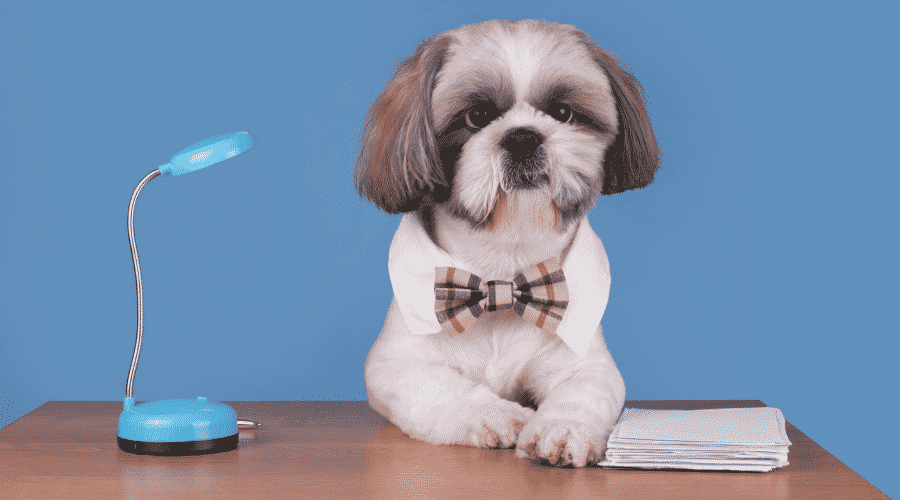
Do Shih Tzus Shed A Lot?
Compared to other breeds of dogs, the Shih Tzu sheds moderately. How much they shed varies seasonally, with the most noticeable shedding when they lose their summer and winter undercoats. Daily brushing minimizes how much hair ends up around the house.
Do I Need To Take My Shih Tzu To A Groomer?
You’ll probably want your Shih Tzu trimmed by a professional groomer unless you have experience with clippers. Their hair grows quickly, and clipping hair on their faces and feet requires a steady hand.
If you don’t want to spend excessive time on your dog’s coat, consider getting your Shih Tzu a “puppy trim” by a professional groomer.
How Can I Reduce My Shih Tzu’s Shedding?
Daily brushing, regular baths with a dog-safe shampoo, and a balanced diet rich in omega-3 fatty acids are the best ways to manage shedding. Keeping up with grooming appointments also helps.
Are Shih Tzus Good For People With Allergies?
Shih Tzus are considered a low-shedding breed, but they are not completely hypoallergenic. They still produce dander and saliva proteins, which can trigger allergies. Regular grooming and using air purifiers can make life easier for sensitive owners.
When Is It Time To Take My Shih Tzu To The Vet?
If your dog is shedding more than usual, inspect the skin beneath their coat. If you notice that their skin seems thick, greasy, scaly, red, or foul-smelling, schedule a consultation with your veterinarian.
Keep Your Shih Tzu Happy, Healthy & Shed-Smart
Managing shedding is only part of the bigger picture of caring for your Shih Tzu. Pet insurance for Shih Tzus can help cover unexpected health issues and give you peace of mind. Regular vet visits are essential for catching skin conditions or allergies before they become serious.
If you’re curious about shedding in Shih Tzu mixes, many inherit similar coat traits, so grooming remains just as important. And don’t forget the right gear. A comfortable harness and engaging toys make daily life easier, allowing you to focus on keeping that beautiful coat under control.
Share Your Shih Tzu Story! Every Shih Tzu is different, and so is their shedding journey. Have tips, funny stories, or challenges you’ve faced with your pup’s coat? Share them in the comments and help other owners learn from your experience.
